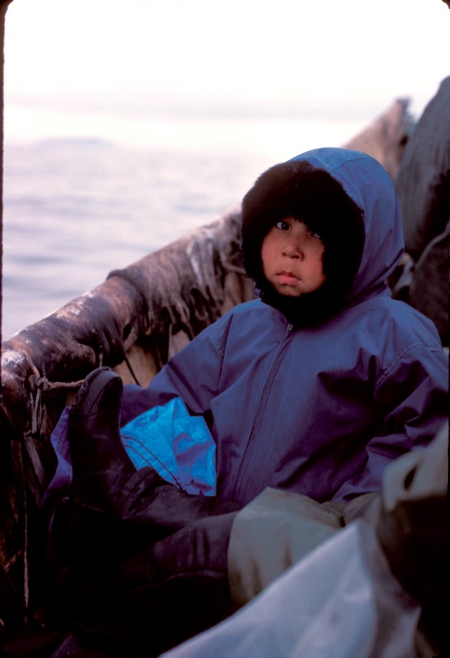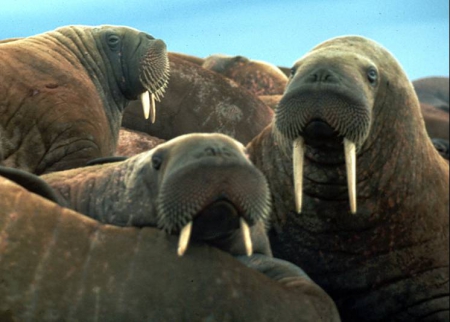By: Brendan Kelly, SEARCH Executive Director
The Obama Administration advanced Arctic science and policies in many important ways, including moving the Interagency Arctic Research Policy Committee into the White House; creating collaboration teams to implement the Arctic research plan; creating and implementing the first National Strategy for the Arctic Region; creating the Arctic Executive Steering Committee in the White House; and hosting the first-ever meeting of Sciences Ministers from Arctic countries.
If all the Ministerial accomplished was prompting briefings of Science Ministers from 25 countries on science needs in the Arctic, it would have been an important advance, but the Ministerial promises more if the effort can be sustained. Whether galvanizing the international community to invest in understanding what is happening in the Arctic and the global implications is sustained will depend not only on future administrations and their international partners, but also on the scientific community. It will depend on our continued research and communications.
SEARCH and the community it represents are dedicated to the call for "knowledge to action" that emanated from the International Polar Year. Thus, we informed the U.S. Congress and the media of our current knowledge of—and concern about—the state of the Arctic through briefings to Congress, our Arctic Alerts event in July 2016; the development of "Knowledge Pyramids," online resources that answer a specific question about environmental change in the Arctic through tiers of increasing detail; and a keynote address at the Arctic Science Ministerial.
In 15 minutes, that keynote had to summarize science challenges and global implications of a rapidly changing Arctic, a task only possible because of the hard work of the Arctic research community and SEARCH's dedication to knowledge to action. To draw in the Ministers, I built the address around a story many in the Arctic research community have heard about the understanding of albedo by St. Lawrence Island hunters. Readers of Witness the Arctic already are drawn in, so I shall not repeat the story here, but I shall summarize the remarks.

We understand that the changing albedo of the Arctic Ocean and lands as one of the key amplifiers of global warming. The impact is especially great in the Arctic Ocean where enhanced surface warming melts sea ice, which further reduces the reflectivity: a self-perpetuating cycle. As a result, sea ice loss is contributing strongly to accelerated warming in the Arctic, where temperatures are now increasing more than two times faster than for the planet as a whole.
These changes are unprecedented in the course of civilization. Civilization evolved in the shadow or—more accurately—in the reflection of a frozen Arctic. Where we grow food, the location of population centers, and much more came about in a geophysical context dependent on a frozen Arctic. Hence, we have no precedents for dealing with the very rapid melting that is occurring. We need aggressive policies informed by science, and we need them very soon.
The scientific challenges include how people are—and will continue to be—impacted by ice melt and permafrost thaw, the main amplifiers of the warming induced by high concentrations of greenhouse gases. The resulting unprecedented change in the Earth's energy balance calls for extraordinary research to understand the impacts on people both inside and outside of the Arctic region.
Some of the most dramatic impacts on people in the Arctic stem directly from declining sea ice. When I first visited the Arctic in 1978, the area covered by sea ice in September averaged 7 to 8 million square kilometers. Since then, the summer ice has shrunk to nearly half that size. That loss of ice has resulted in a warming signal equivalent to 25% of the warming attributed to greenhouse gas emissions.
In an underdeveloped region with minimal roads, ports, and other infrastructure, Indigenous hunters depend on sea ice as an extension of land. They travel over that ice to access their marine foods. In the past few decades, however, an area of sea ice twice the size of Alaska has been lost—diminishing essential access to important foods.
Moreover, sea ice decline is outpacing the model projections, suggesting that some key process or processes are not understood. But, even the most optimistic models forecast a dire future for Arctic sea ice. The models make clear that unless we reduce considerably the burning of fossil fuels, summer sea ice—in a few decades—will be down to 1/8th of the area it covered when I first visited the region. We obviously need to accelerate understanding and model development.
Diminishing sea ice also threatens species dependent on ice as habitat and, in turn, threatens people who have depended on those species for millennia. Walruses and a host of other species are especially adapted to living on, in, or directly below sea ice. The much-reduced ice cover of the near future may or may not provide an adequate refuge for ice-dependent species.
Many of those species will be depleted—if not driven to extinction—by diminished sea ice cover. Walrus mortalities of the sort that Alex Akeya of Savoonga and I investigated in 1979 are becoming more common as walruses are forced to coastlines by shrinking ice cover. But those coastlines themselves are under assault. Reduced sea ice cover allows waves to batter shorelines. In northern Alaska, rates of coastal erosion have doubled in the past 50 years. The average rate of loss is now 1.5 meters per year with some areas losing 20 meters per year. Homes, airports, oil wells, and ice cellars are being lost.

Nor, is infrastructure damage limited to the coasts. Permafrost underlies one quarter of Northern Hemisphere landscapes. Thawing permafrost is altering those landscapes and undermining infrastructure across the entire Arctic.
While diminished access to food, ecosystem changes, and collapsing infrastructure are impacting Arctic residents, people at lower latitudes increasingly will also feel the consequences of the changing Arctic.
For example, permafrost thaw will impact people outside of the Arctic by amplifying atmospheric concentrations of greenhouse gases. As permafrost thaws, organic compounds become available for decomposition by microbes, releasing greenhouse gases. At current rates of warming, an additional 150 billion tons of permafrost carbon could be released, primarily as carbon dioxide, during this century. For perspective, that is equivalent to about 22 years of carbon emissions by the United States at current rates.
Nor, are global impacts limited to permafrost thaw. Since the year 2000, the volume of water annually entering the ocean from melting glaciers and ice sheets has increased by more than 500% in Greenland and close to 200% in the Gulf of Alaska. The combined total is now contributing close to 1 mm in sea level rise annually. Projections of sea level rise in this century range from less than 1 meter to over 2 meters depending on emissions scenarios and assumptions about how ice sheets will respond. Millions of homes and hundreds of billions of dollars in infrastructure will be imperiled. Thus, the well being of hundreds of millions of people living in coastal areas will depend on accelerated research and more precise estimates of future sea level rise.
In contrast to land ice, sea ice does not contribute directly to sea level rise, but it does contribute indirectly through its amplification effect on atmospheric temperatures. And no location is immune to the changes in global weather patterns linked to the loss of sea ice in the Arctic. Increasingly persistent weather regimes are leading to longer and more severe droughts, cold outbreaks, heat waves, and wildfires.
With larger portions of the Arctic Ocean free of ice for longer periods, ocean heat is escaping into the Arctic atmosphere. One result is a reduced differential in atmospheric temperatures between the Arctic and mid latitudes, and that reduced differential weakens the jet stream's west-to-east winds. These wavier jet streams are believed to be responsible for more frequent extreme weather events, such as stormy winters and flooding in Europe, Asia, and North America.
We urgently need to understand the complexities of the whole earth system—an unprecedented scientific challenge that no nation can meet alone. We need scientific leadership at the highest levels of governments to ensure that we expeditiously harness our collective scientific talent and resources to meet a challenge unlike any civilization has previously faced.
We in the scientific community need to sustain and amplify observations, process studies, and models to inform the global response the rapid environmental changes in the Arctic. Thus, we must shoulder much of the responsibility to make good on the Arctic promises of the Obama Administration and the Arctic Science Ministerial.
For another perspective on the Arctic Science Ministerial, see this article by Robert Rich, ARCUS Executive Director
